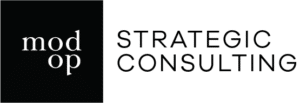Agile methodology has become
the
go-to method of software development. Formally born in 2001, Agile is a management framework designed to accommodate the unpredictable and empirical world of software development with adaptive planning, self-propelled teams, and continuous improvement. Though strictly speaking Agile was created for software development, I count myself and my team amongst a growing movement of people who are using the Agile methodology in all sorts of business settings…and here’s why:
Agile is able to respond to changes, not just stick to a plan…
More traditional project management techniques follow a ‘waterfall’ approach. From research to planning through implementation, a project moves incrementally downward through different teams much like an assembly line. The big flaw with this ‘waterfall’ method is that knowledge and insight that is accrued along the way cannot alter the trajectory or goals of the project. Obviously, your teams will develop a more nuanced view of a given project as their work advances, perhaps even large chunks of the plan turn out to be redundant or impossible, this valuable acquired knowledge is often squandered or kicked back up to the top of the waterfall.
Agile methodology is designed specifically to adjust to change by acknowledging that valuable and key information is acquired along the way. Agile segments the work and it’s done in short sprints, the methodology relies upon the constant evaluation of these small chunks of work, reviewing results and deciding business value along the way. Agile’s leveled hierarchies and workflows also lead to increased efficiency and flexibility, two things that are extremely important in today’s warp-speed digital economy.
Agile demands constant collaboration and measurable progress
In the Agile manifesto, it states that individuals and interactions must be valued over processes and tools. Agile framework demands regular face-to-face meetings to track progress and consistently realign. This facilitates self-organizing teams which are truly collaborative. Furthermore, collaboration means team members have a real stake in company success, engaged and collaborative workers equals high moral and quality work.
Agile is great for tracking progress with its continuous smaller steps. Each step is a measurable step forward and is a piece of the whole project. Running a marathon is not one leap, it is roughly 40,000 strides, or may just short of 2,000 strides per mile. In Agile you measure the velocity, similar to pace per mile, and you connect the velocity to frequent milestones.
Agile demands constant reality checks…
Projects and products often fail because of a lack of perspective. Managers and teams can’t see the forest for trees, misunderstanding or miscommunication builds up, teams begin to work at cross purposes, etc. Agile’s collaboration model and consistent meetings reduces the chances for a cancerous project to develop. Individuals and teams are constantly required to check each other, pushback is encouraged. Agile doesn’t allow team members to work in a vacuum, to turn a blind a blind eye, or too deliberately slow down progress.
Agile was born in the digital economy and it shows.
Agile development represents something of a revelation for the fast paced digital economy. The constant reassessment and navigation adjustments allows even very large companies to be uncharacteristically nimble and quick, shaking off some of their weight and swatting start-ups away. One project earlier in my career, a multi-year and multi-million dollar investment, was not run as Agile at first, and after 9 months we found that we could not truly measure progress. We switched to Agile, which was a short delay at first, but the visibility in the progress made it
worth it.
Go forth!
Taken all together, the measurability, continuous engagement across stakeholders, team environment, short sprints to accomplish goals is a huge asset for business, and is producing great results at our clients. The new digital economy demands nimbleness and Agile delivers it.
















